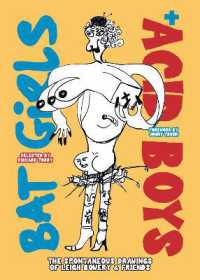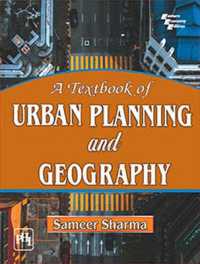- ホーム
- > 洋書
- > 英文書
- > Literary Criticism
Full Description
Each age tends to reinvent ""Hamlet"" in its own image. This is no less true of the Victorians as anyone else. Not for them the effete melancholic of the Romantic age, defeated by the immensity of the task laid upon him. The Victorians wanted a strong Hamlet, and that is exactly what they gave us. The attempt of the Germans to appropriate a British national icon is finally beaten off by George Henry Lewes and others. In this age of Empire, we also have a recognition of the universality of Shakespeare's hero and his relevance for all cultures and conditions. This period was the high point of the play's popularity. For the Victorians Hamlet was a riddle, but one that the Victorians believed they could solve. In the pages of the current Critical Responses to Hamlet, we see writers bringing to bear various ""scientific"" approaches to its mysteries: textual, historical, and, above all, medical and psychological. The interest in abnormal states of mind and behavior drew writers to the play. ""Hamlet"" was not only reinvented in the Victorian scholar's study, but in the theater as well. A new Hamlet trod the boards in the shape of Henry Irving. This, too, was the age of the female Hamlet, with Sarah Bernhardt and others many a time and oft attempting the role. At this time the French dared to claim this British national property as their own to the scorn of the British press. As extracts from contemporary newspapers and journals show, ""Hamlet"" was a lively and popular focus of interest. There is no better illustration of this than the extracts from the antipodean journal, The Argus, where we see correspondents from the far-flung gold-fields of Ballarat and elsewhere locked in critical debate on finer points of interpretation of Shakespeare's play. In this two-volume set we have the thoughts of the great Victorian novelists, George Eliot, Dickens, and Trollope, on the play. Perhaps only George Eliot and at this period could we have the appropriation of a potentially domestic, happily-married Hamlet seated at his fireside, with Ophelia as the angel of his house.
Contents
1. George Henry Lewes, ""Charles Kean's Hamlet""; ""Hamlet and the German Actors""; extracts from ""Fechter in Hamlet and Othello""; extracts from ""First Impressions of Salvini.""; 2. Richard Grant White, Extracts from Shakespeare's Scholar: being Historical and Critical Studies of his Text, Characters, and Commentators, with an Examination of Mr. Collier's Folio of 1632; and from the introductory remarks to Hamlet in The Works of William Shakespeare; extracts from ""The Case of Hamlet the Younger"" and ""On the Acting of Iago"", Studies in Shakespeare; 3. Alfred Lord Tennyson, from Hallam Tennyson, Alfred Lord Tennyson: a Memoir; 4. William Watkiss Lloyd, from Essays on the Life and Plays of Shakespeare; 5. Walt Whitman ""Shakespeare Born.""; 6. Henry Reed, from Four Lectures on Tragic Poetry; 7. Charles Bathurst, from Remarks on Shakespeare's Versification; 8. John Bucknill, from The Mad Folk of Shakespeare; 9. Charles Dickens, ""Mr Wopsle Plays Hamlet.""; 10. George Eliot, from The Mill on the Floss; 11. Samuel Timmins, Bibliographical Preface, Hamlet Q1 & Q2; 12. Anon., The Times Review of Fechter's Hamlet; 13. Charles Cowden Clarke, From Shakespeare's Characters; 14. John Conolly, A Study of Hamlet; 15. Hippolyte Taine, from History of English Literature; 16. Victor Hugo, from Shakespeare; 17. Thomas Kenny, from The Life and Genius of Shakespeare; 18. James Smith et al., The Hamlet Controversy; 19. James Russell Lowell, Shakespeare Once More; 20. George Henry Miles, Review of Hamlet; 21. Percy Fitzgerald, The First Night of Irving's Hamlet; 22. Anon. The Times Review of Irving's Hamlet; 23. Anon., ""Mr Irving's Hamlet.""; 24. Frank Marshall, A Study of Hamlet; 25. Edward Dowden, (a) Hamlet from Shakspere, His Mind and Art, and (b) Introduction to the Arden edition of Hamlet; 26. Antony Trollope, Letter to G. H. Lewes; 27. A. W. Ward, from History of Dramatic Literature; 28. Frederick J. Furnivall, ""Hamlet.""; 29. John Weiss, from ""Hamlet"", in: Twelve Wit, Humor and Shakespeare Essays; 30. George Wilkes, from Shakespeare from an American Point of View; 31. Henry Irving, ""Hamlet and Ophelia.""; 32. [Margaret Oliphant], ""Hamlet"" Blackwood's Edinburgh Magazine; 33. Mary Cowden Clarke, from The Girlhood of Shakespeare's Heroines; 34. Edmund Falconer, ""Something Touching My Lord Hamlet.""; 35. Helena Faucit, Lady Martin, ""Ophelia"", On Some of Shakespeare's Female Characters; 36. Algernon Charles Swinburne, from A Study of Shakespeare; 37. Joseph Knight, ""A Performance of the First Quarto.""; 38. Matthew Arnold, ""Hamlet Once More.""; 39. Ernesto Rossi on Hamlet; 40. Clement Scott, ""The New Hamlet""; Henry Irving, Herbert Beerbohm Tree, J.Forbes Robertson, Sarah Bernhardt; from Some Notable Hamlets of the Present Time; 41. Moy Thomas, ""Hamlet's Age.""; 42. George MacDonald, from The Tragedie of Hamlet; 43. Julia Wedgwood, ""Aeschylus and Shakespeare. The Eumenides and Hamlet.""; 44. Frederick Gard Fleay, from A Chronicle History of the Life and Work of William Shakespeare: Player, Poet, and Playmaker; 45. Fredericka Beardesley Gilchrist, from The True Story of Hamlet and Ophelia; 46. William Ward Crane, ""Allegory in Hamlet.""; 47. Mowbray Morris, ""Hamlet and the Modern Stage.""; 48. Barratt Wendell, from William Shakespeare, a Study in Elizabethan Literature; 49. Master Jack Howison, Hamlet: A Descriptive Account of its Performance; 50. John Corbin, from The Elizabethan Hamlet; 51. Ivan Turgeniev, Hamlet and Don Quixote; 52. Ella Adams Moore, ""Moral Proportion and Fatalism in Hamlet.""; 53. Frederick S. Boas, from Shakspere and his Predecessors; 54. John Robertson, Montaigne and Shakspere; 55. Kate Tery Gielgud; 56. George Bernard Shaw on Hamlet; 57. Sir Herbert Beerbohm Tree, Hamlet - from an Actor's Prompt Book; 58. Sidney Lee, from A Life of William Shakespeare; 59. Georg Brandes, from Shakespeare: A Critical Study; 60. Max Beerbohm, Hamlet Princess of Denmark.








